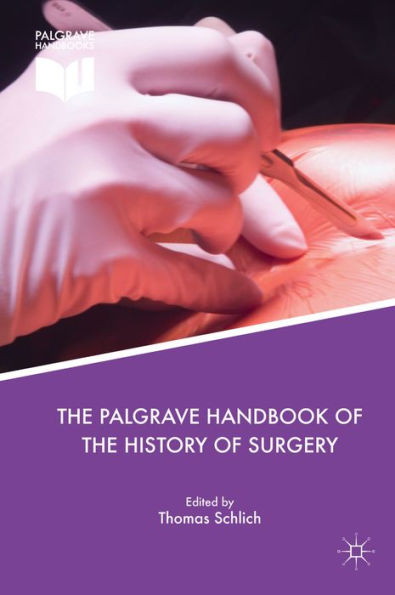This handbook covers the technical, social and cultural history of surgery. It reflects the state of the art and suggests directions for future research. It discusses what is different and specific about the history of surgery - a manual activity with a direct impact on the patient’s body. The individual entries in the handbook function as starting points for anyone who wants to obtain up-to-date information about an area in the history of surgery for purposes of research or for general orientation. Written by 26 experts from 6 countries, the chapters discuss the essential topics of the field (such as anaesthesia, wound infection, instruments, specialization), specific domains areas (for example, cancer surgery, transplants, animals, war), but also innovative themes (women, popular culture, nursing, clinical trials) and make connections to other areas of historical research (such as the history of emotions, art, architecture, colonial history).
Chapters 16 and 18 of this book are available open access under a CC BY 4.0 license at link.springer.com
This handbook covers the technical, social and cultural history of surgery. It reflects the state of the art and suggests directions for future research. It discusses what is different and specific about the history of surgery - a manual activity with a direct impact on the patient’s body. The individual entries in the handbook function as starting points for anyone who wants to obtain up-to-date information about an area in the history of surgery for purposes of research or for general orientation. Written by 26 experts from 6 countries, the chapters discuss the essential topics of the field (such as anaesthesia, wound infection, instruments, specialization), specific domains areas (for example, cancer surgery, transplants, animals, war), but also innovative themes (women, popular culture, nursing, clinical trials) and make connections to other areas of historical research (such as the history of emotions, art, architecture, colonial history).
Chapters 16 and 18 of this book are available open access under a CC BY 4.0 license at link.springer.com

The Palgrave Handbook of the History of Surgery
578
The Palgrave Handbook of the History of Surgery
578eBook (1st ed. 2018)
Related collections and offers

Product Details
| ISBN-13: | 9781349952601 |
|---|---|
| Publisher: | Palgrave Macmillan UK |
| Publication date: | 12/12/2017 |
| Sold by: | Barnes & Noble |
| Format: | eBook |
| Pages: | 578 |
| File size: | 3 MB |
